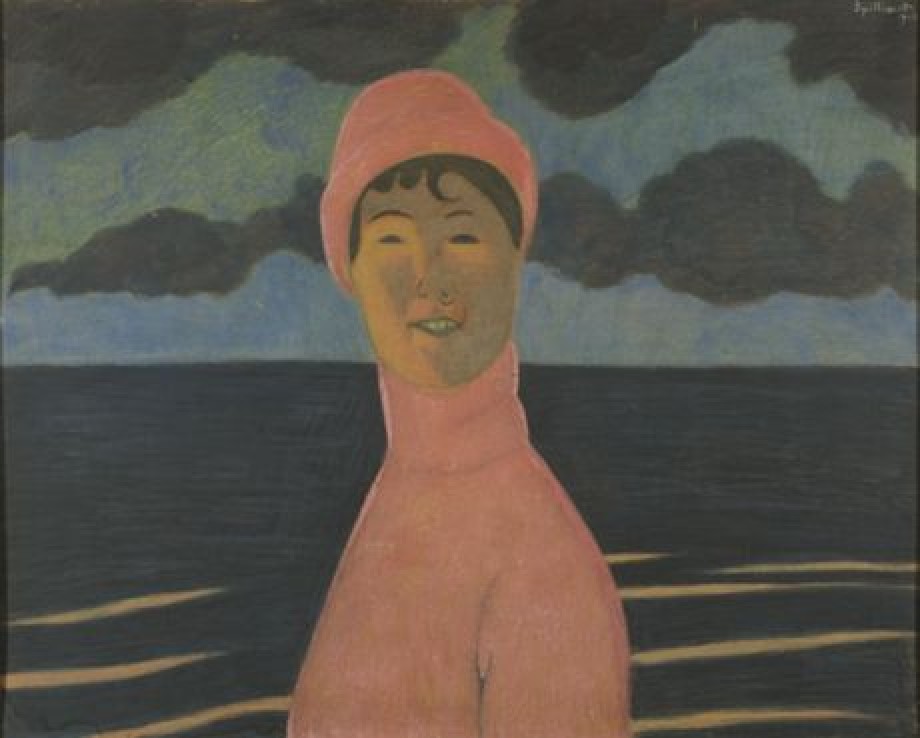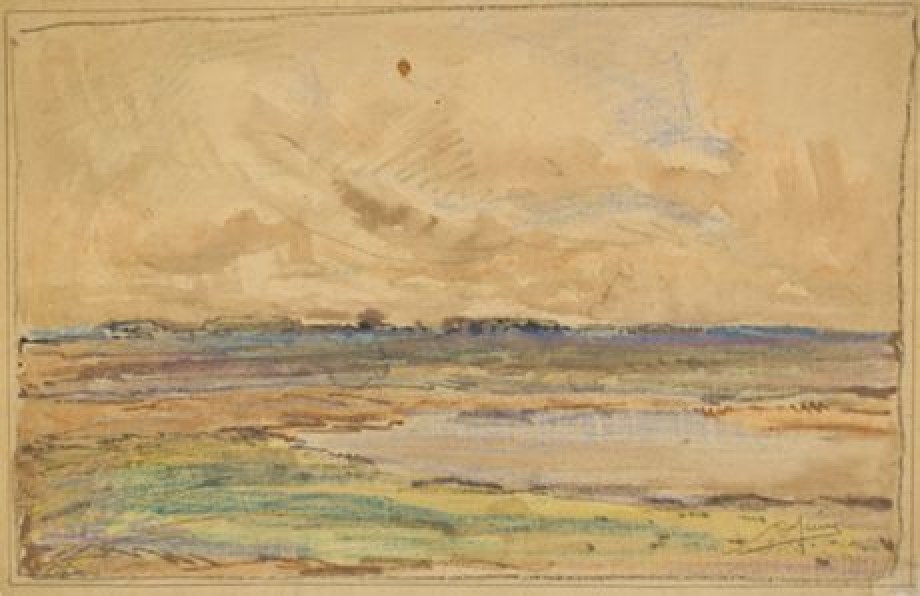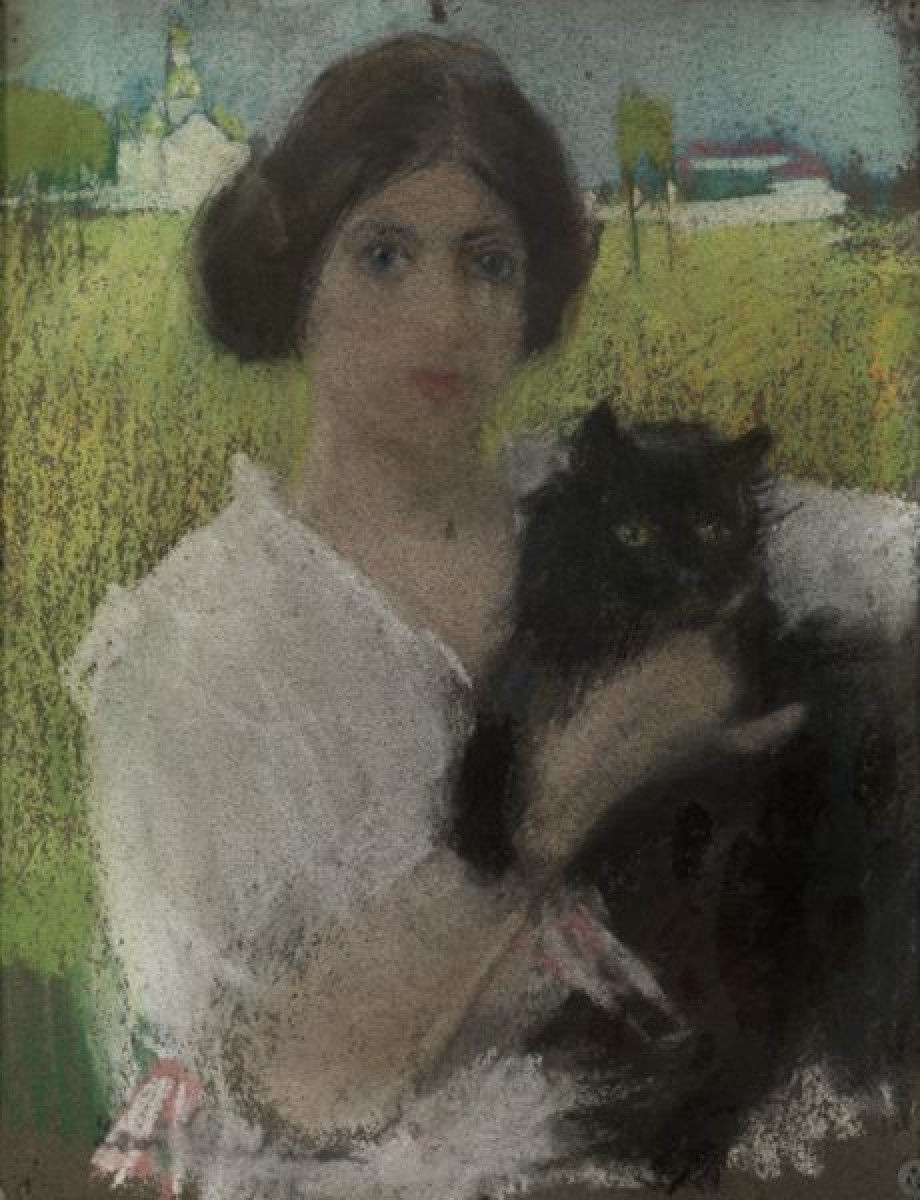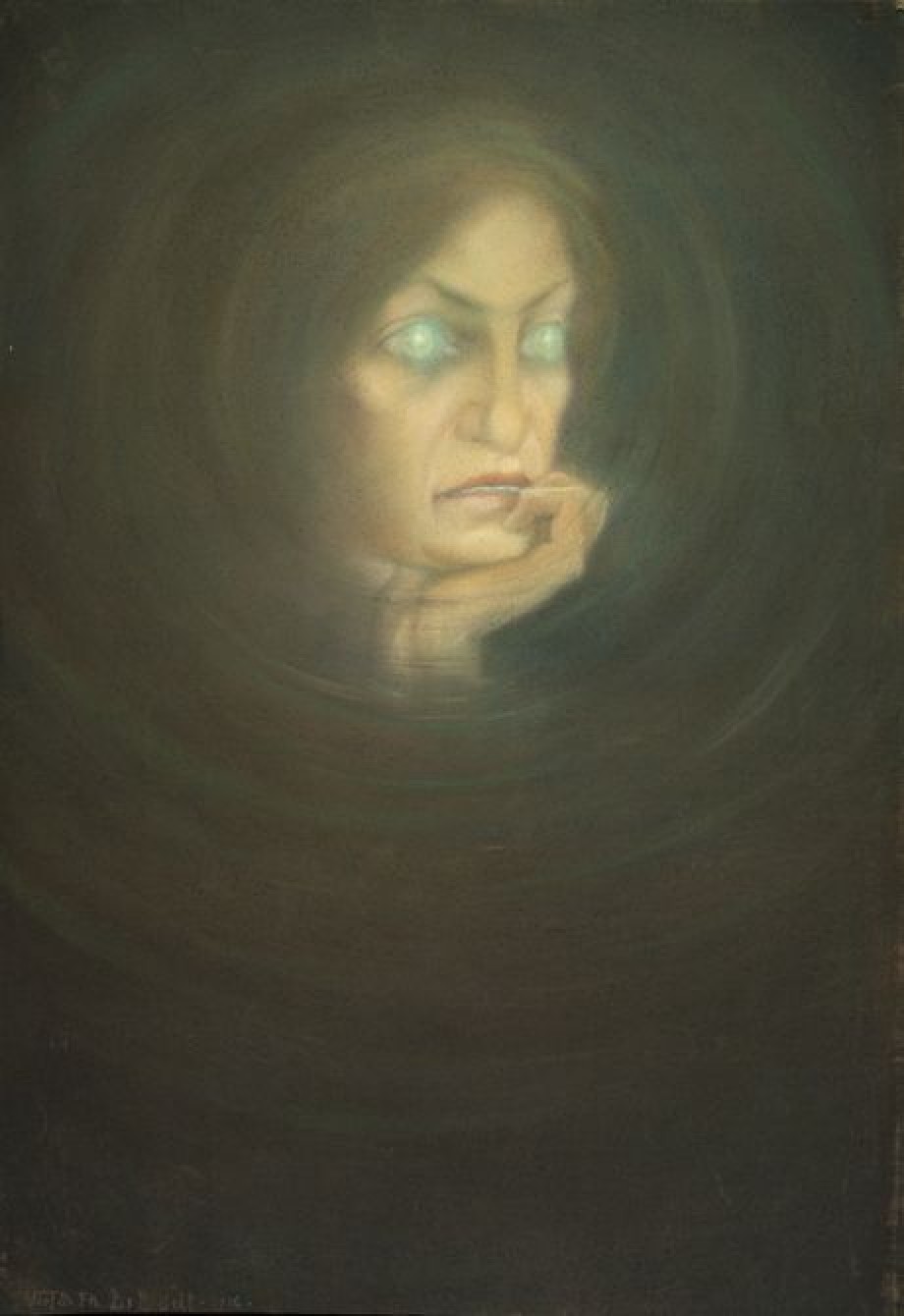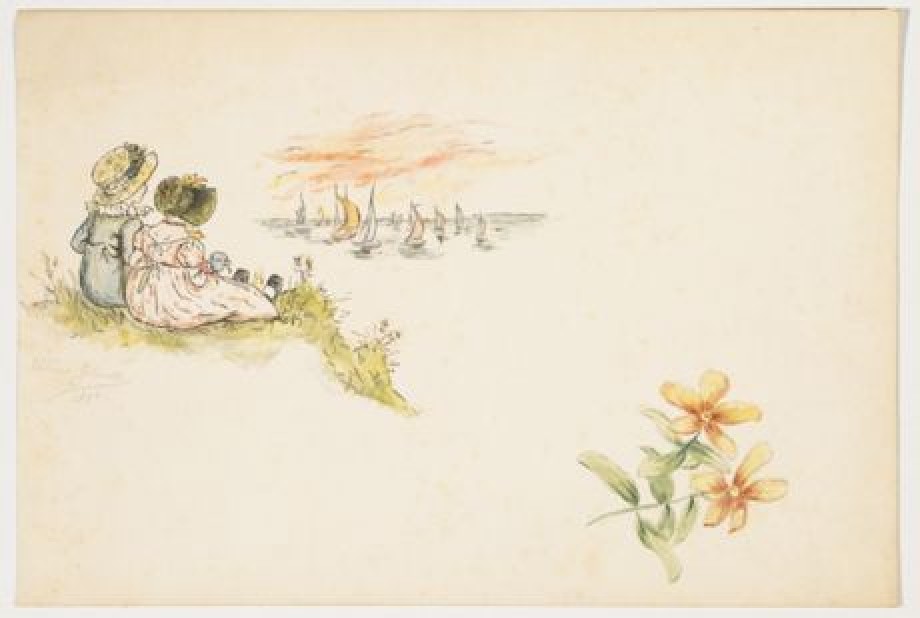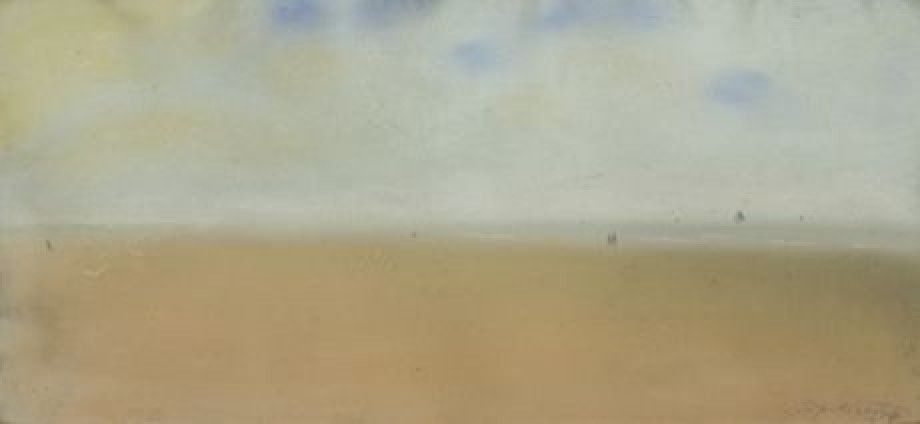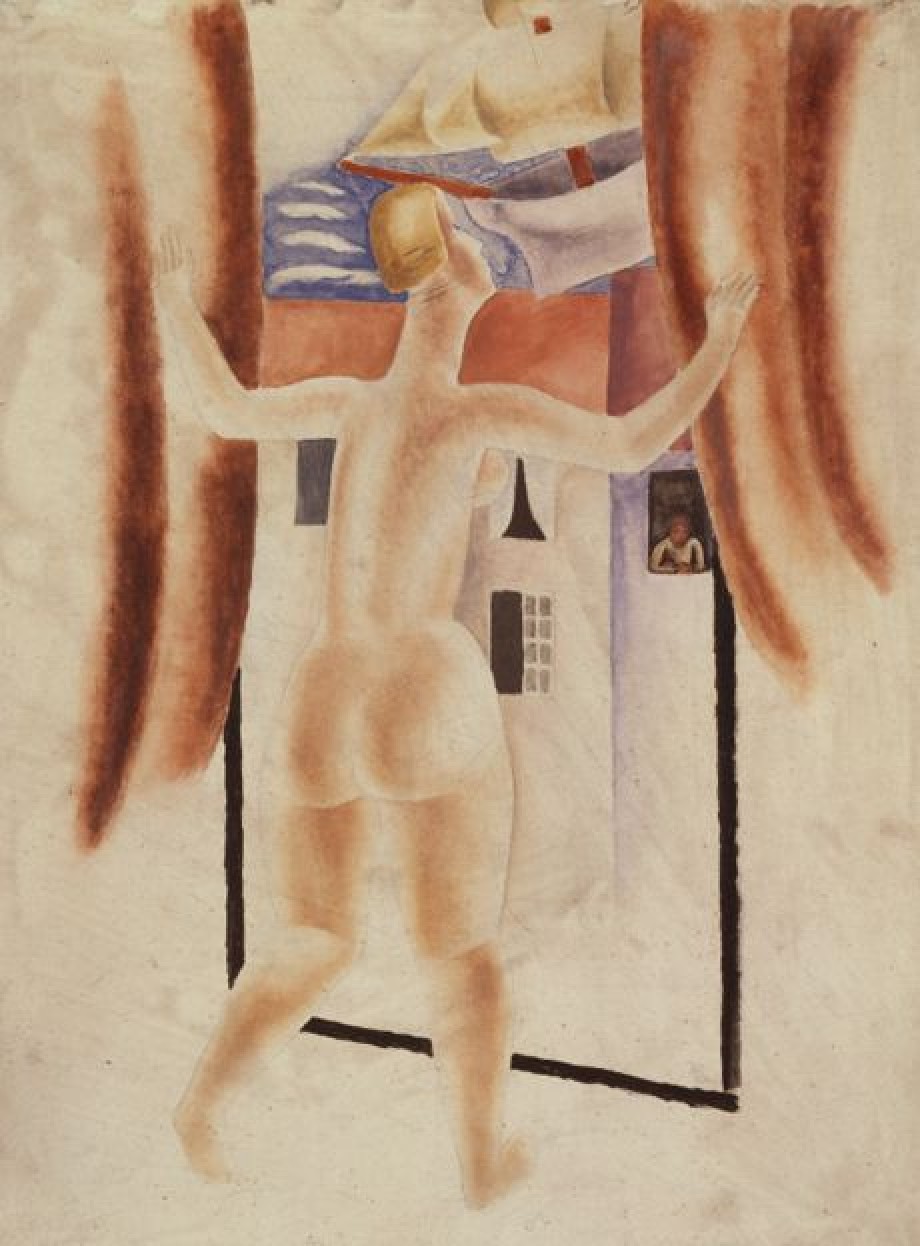The River

Artist / maker
Leon Spilliaert (draftsmen (artists))Date
1913Period
20th centuryCollection
Museum of Fine Arts Ghent
In 1908, the dancing mermaid, born from the foam of the sea, appeared in Spilliaert's oeuvre for the first time, but it was only from 1910 onwards that the earthly bathing star began to fascinate him as a compositional theme in its own right. Initially, the bather still belonged to the legendary apparitions. She appears as a silhouette precariously balanced…
Read more
In 1908, the dancing mermaid, born from the foam of the sea, appeared in Spilliaert's oeuvre for the first time, but it was only from 1910 onwards that the earthly bathing star began to fascinate him as a compositional theme in its own right. Initially, the bather still belonged to the legendary apparitions. She appears as a silhouette precariously balanced on a breakwater post or as an imploring priestess with a cup in her hand, sealing the union with the flowing water element. Spilliaert gradually discerns a worldly appearance in this mythical woman. The sketchbook that he started using in April 1910 is not only full of studies of fishermen's wives in wide skirts, but also of drawings of a naked bathing woman. A careful study of the theme of the bather reveals that Spilliaert's main interest is in the anonymous seated bather. It is not the depiction of the seductive female nude that fascinates him, as some of his contemporaries do, so he does not work from a live model. After these first compositions from 1910, in which a standing or seated bather provocatively confronts the sea, Spilliaert increasingly prefers the pose of a crouching woman supporting herself on her hands and knees. That even such a simple, seemingly submissive pose can contain a highly refined body expression is proven by the studies, whose rhythmic lines show a strong affinity with Japanese ink drawings. Between 1910 and 1913, a dozen variants were created in which the woman is either clearly in the foreground in full light, or stands out as a dramatic dark silhouette against a bright afternoon or evening sun. To us, Spilliaert's bather is inseparably linked with the sea. She is intimately united with the liquid element, while she stares at her reflection in the flooded sand and her wrists and knees are rinsed by the water. In other compositions, he is crouching on a dune, looking at the tide line with his head held high or bowed. On closer inspection, the squatting nude of the Ghent collection is more than a bather calmly gazing at the sea. In fact, the water element represented here is not an infinite vast sea but a limited watercourse. This explains the inscription that Spilliaert himself painted on the protective cardboard: Le Fleuve. This description must therefore be accepted as the title of the work. The naked woman is depicted here as a symbol of a stream, resting on a rock on the shore. Her majestic silhouette catches the last of the sunlight, which is partially obscured by dark evening clouds. It is not the only time that Spilliaert evokes another reality with a metaphorical image. Spring, for example, is a title that he repeatedly uses for a wide range of images.
Read less

